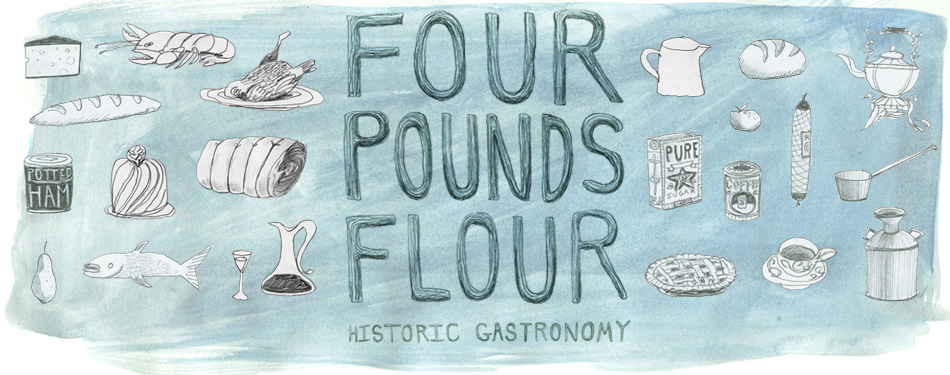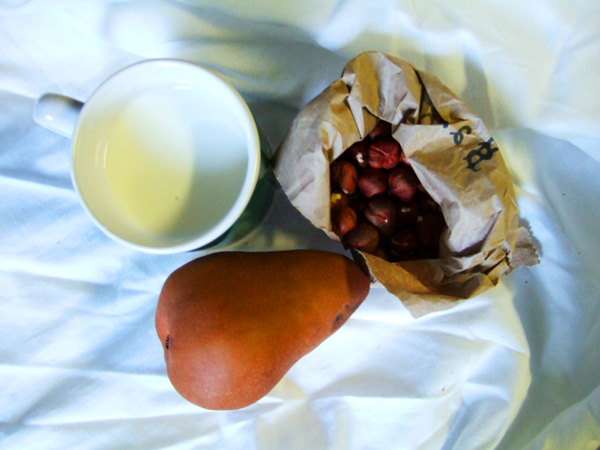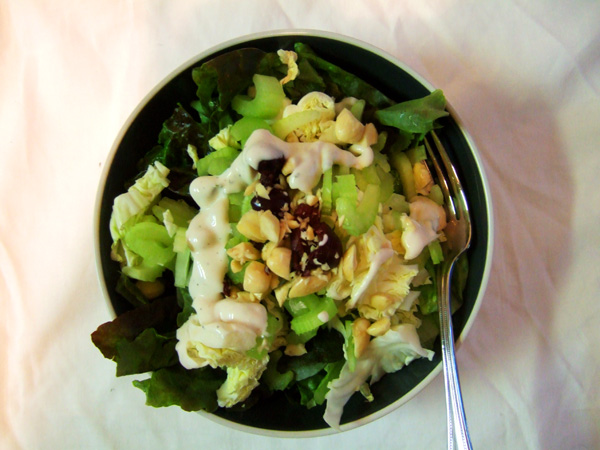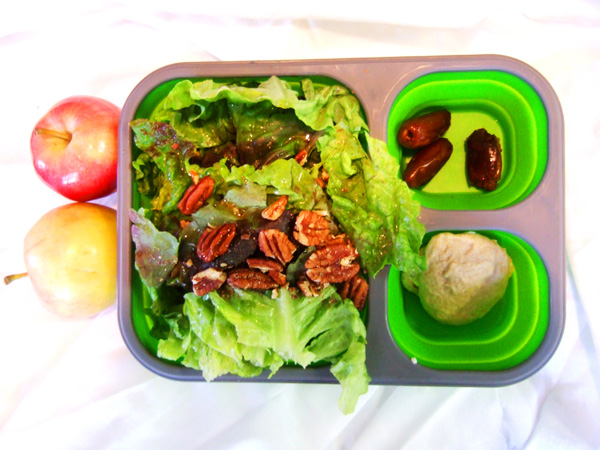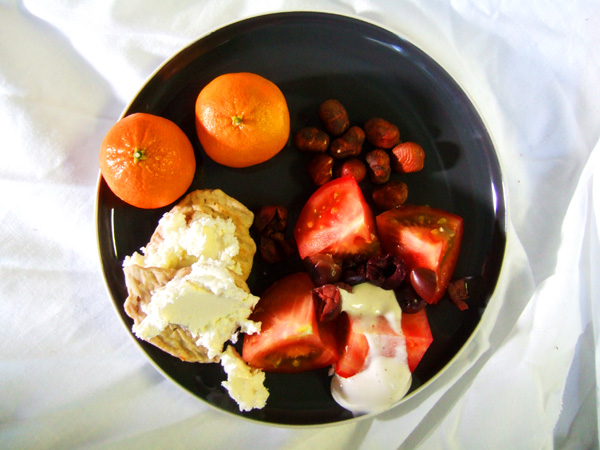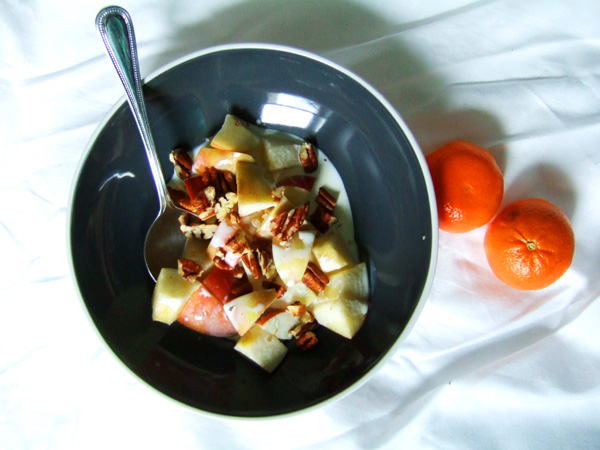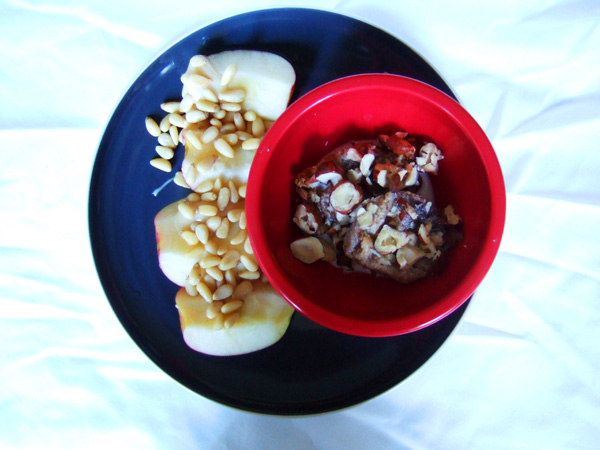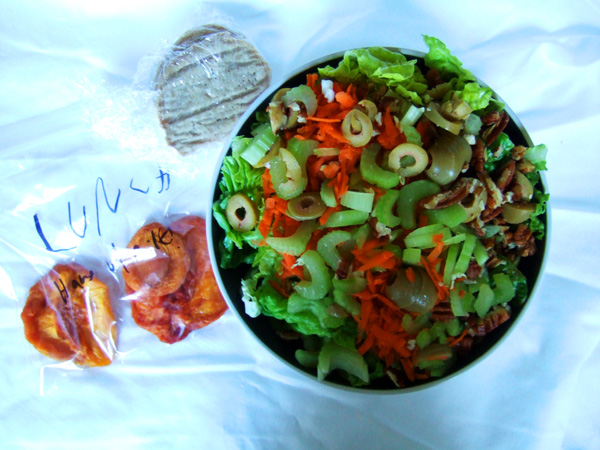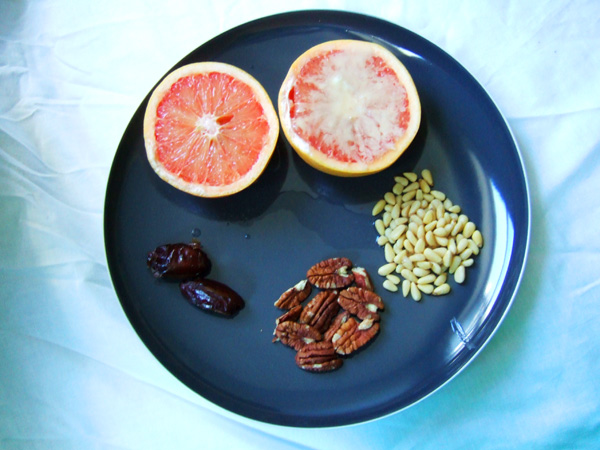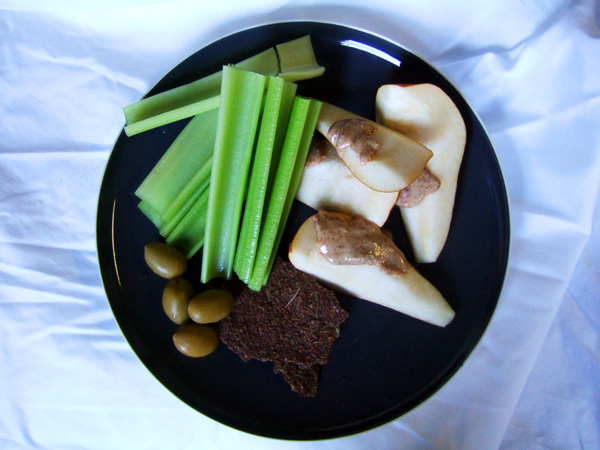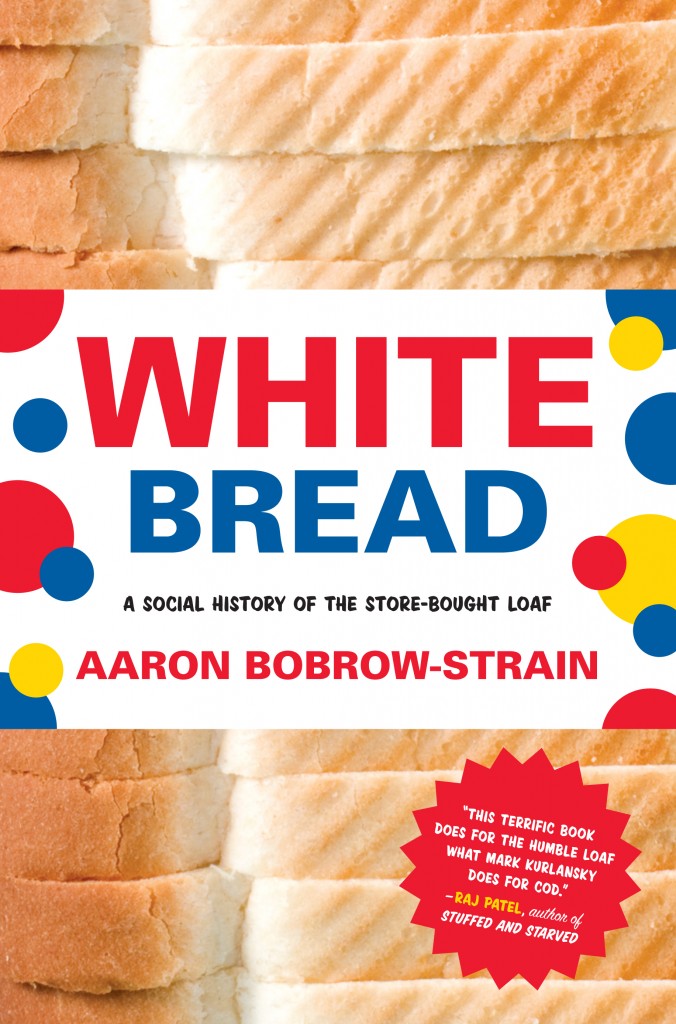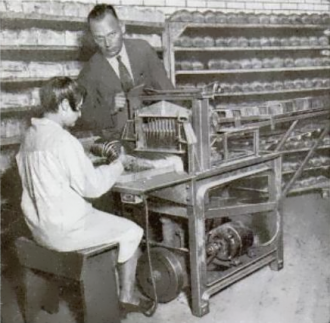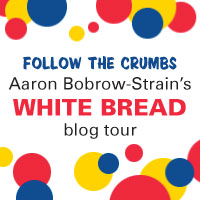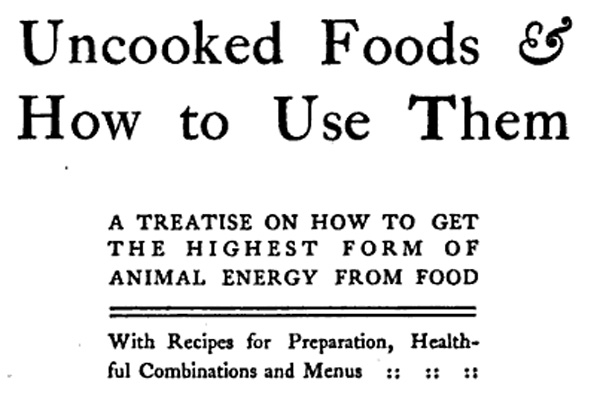
Now and then, I like to immerse myself in the diet of another time and culture. I’ve been hungry, vegetarian, kosher, vegan, and drunk.
Recently, my friend Sharon (of Starting from Scratch) emailed me a 1904 cookbook: Uncooked Foods and How to Use Them, by Eugene and Molly Griswold Christian. It’s an early raw- foods manifesto and you can read it on Google Books here. For the next week, my diet will be entirely “raw.”
What is a Raw Diet?
A contemporary raw diet is defined by “unprocessed raw vegan foods that have not been heated above 115 degrees Fahrenheit (46 degrees Celsius). ‘Raw foodists’ believe that foods cooked above this temperature have lost their enzymes and thus a significant amount of their nutritional value and are harmful to the body, whereas uncooked foods provide living enzymes and proper nutrition. ” (source) There are several liberal offshoots of the raw food movement, wherein you include a certain percentage of raw foods in your diet, or simply always not cook foods that can be eaten raw, and cook foods that cannot.
Eugene and Molly Christian are both less specific, and more strict in their diet: it contains no heated foods, and although they do have a chapter on warm soup, the recommend against it. There are additional prohibitions on vinegar, “fermented” foods (like alcohol), and leavened bread. Their diet, however, is not vegan: raw seafood and meat are acceptable.
The raw food diet is the most primordial diet a person can eat: before man discovered fire, his diet was entirely raw. Modern histories of the raw food movement begin with this ideal of early man, mention Pythagoras (who was vegetarian) and then skip straight to the 1930s, when a raw food clinic opened up in Switzerland. There is no mention of the Christians and Uncooked Foods, despite the fact that this seems to be the earliest raw food “cook” book there is.
Why Go Raw?
According to Uncooked Foods, there are three reasons:
1. Simplicity and Economy. Less ingredients and less time spent cooking equals more money and time for other things.
2. As a Remedy. The Christians were “cured” of all their ailments by a raw food diet, which is what inspired them to write their book. They say that most ailments are caused by a poor diet and eating nature’s perfect foods, uncooked, is the remedy.
3. Emancipation of Women. The Christians argue that less time spent cooking equals more time for women to do other things. Preparing three meals a day is incredibly labor intensive; I’ve done it for the purposes of this blog. As soon as I finished one meal it was time to get ready to make the next. Freedom from these duties will “…Prove and important factor in lifting [women] mentally, morally and physically into an entirely different sphere.” An intriguing idea–and not something I had envisioned as part of this early manifesto.
Uncooked Foods says that “raw” is a horrible, ugly word for this movement. A ripe apple or peach is not “raw,” the authors argue: “These things are finished, ready for use; they are perfect, they are not raw, they are done; and when they are cooked, they are undone.”
The Menu for this Week
I’ll be posting about my experiences daily.
Sunday:
Breakfast: Grape Fruit or Oranges; Pecans; Protoid Nuts (Pine Nuts); Dates; Whipped Eggs; Milk
Lunch: Bananas (ripe); English Walnuts; Protoid Nuts; Unfired Crackers; Dates; Cold Slaw with Olive Oil; Persian Prunes with Cream; Milk
Dinner: Winter Nellie Pears; Pecans; Black Walnuts; Ripe Olives; Celery; Flaked Wheat, Dates, and Cream; Unfired crackers; Combination Nut Butter; Fruit Jelly with Whipped Cream; Dates; Egg-nog
Monday:
Breakfast: Apples; Protoid Nuts; Filberts; Turkish pulled figs with cream
Lunch: Pecans; Olives; Vegetable Salad with Hygeia dressing; Unfired Crackers; Sweet Butter; Evaporated Peaches and raisins; Milk
Dinner: Oranges; Apples; Pecans; Protoid nuts; Ripe Olives; lettuce; Flaked Oats, Dates and Cream; Unfired Crackers; Sweet Butter; Fruit Salad; Egg Nog.
Tues:
Breakfast:Apples; Pecans; Bananas and Cream; Unfired wafers; seeded raisins; milk
Lunch: Apples; Chestnuts; Pecans; Celery Salad; Unfired Crackers; Date and nut Butter; Dates; Persimmons with Cream
Dinner: Sliced Pineapple; Pecans; Blanched Almonds; Ripe Olives; Celery; Unfired wafers; Combination Nut Butter; Sliced Bananas, Dates and Cream; egg-nog
Weds:
Breakfast: Sliced sweet apples with cream; pecans; protoid nuts; sliced oranges; dates; egg-nog
Lunch: Pears; pecans; english walnuts; tomato salad with hygeia dressing; fruit wafers; cream cheese; turkish figs with cream; dates; milk
Dinner: Oysters on Half Shell; unfired crackers; ripe olives; stuffed peppers; pecans; chestnuts; sun-cooked corn; ice cream; fig and nut cake
Thurs:
Breakfast: Sliced Banana with Thick Cream; Pecans; Protoid Nuts; Dates; Egg-nog
Lunch:Oranges; Pecans; Cold Slaw; Persian Prunes with Thick Cream; Unfired Crackers; Combination cereal; Dates; fig butter; protoid nuts; milk
Dinner: Tokay grapes; Pecans; Unfired crackers; sliced cucumbers; cherry pie; sweet butter; brazil nuts; seeded raisins; ripe olives; milk
Fri:
Breakfast: Sliced pineapple; Pecans; Protoid nuts; Evaporated Apples; Dates
Lunch: Apples; Pecans; English Walnuts; Lettuce; Sweet Butter; Unfired wafers; Dates; Fruit and Nut medley; Milk
Dinner:Oranges; Protoid Nuts; Black walnuts; ripe olives; sliced tomatoes; unfired wafers; cream cheese; prune whip with whipped cream; figs; milk
Sat:
Breakfast: Grapes; Apples or Pears; Nuts; Dates; Milk
Lunch: Red Banana (very ripe) with Thick Cream; Pecans; Brazil Nuts; Seeded Raisins; Dates; Whipped Egg; Rich Milk
Dinner: Grapes; Pecans; Peanuts; Lettuce with Olive Oil; Fruit and Nut Medley; Turkish Figs with Cream; Unfired Wafers; Cream Cheese; Dates: Egg-Nog
